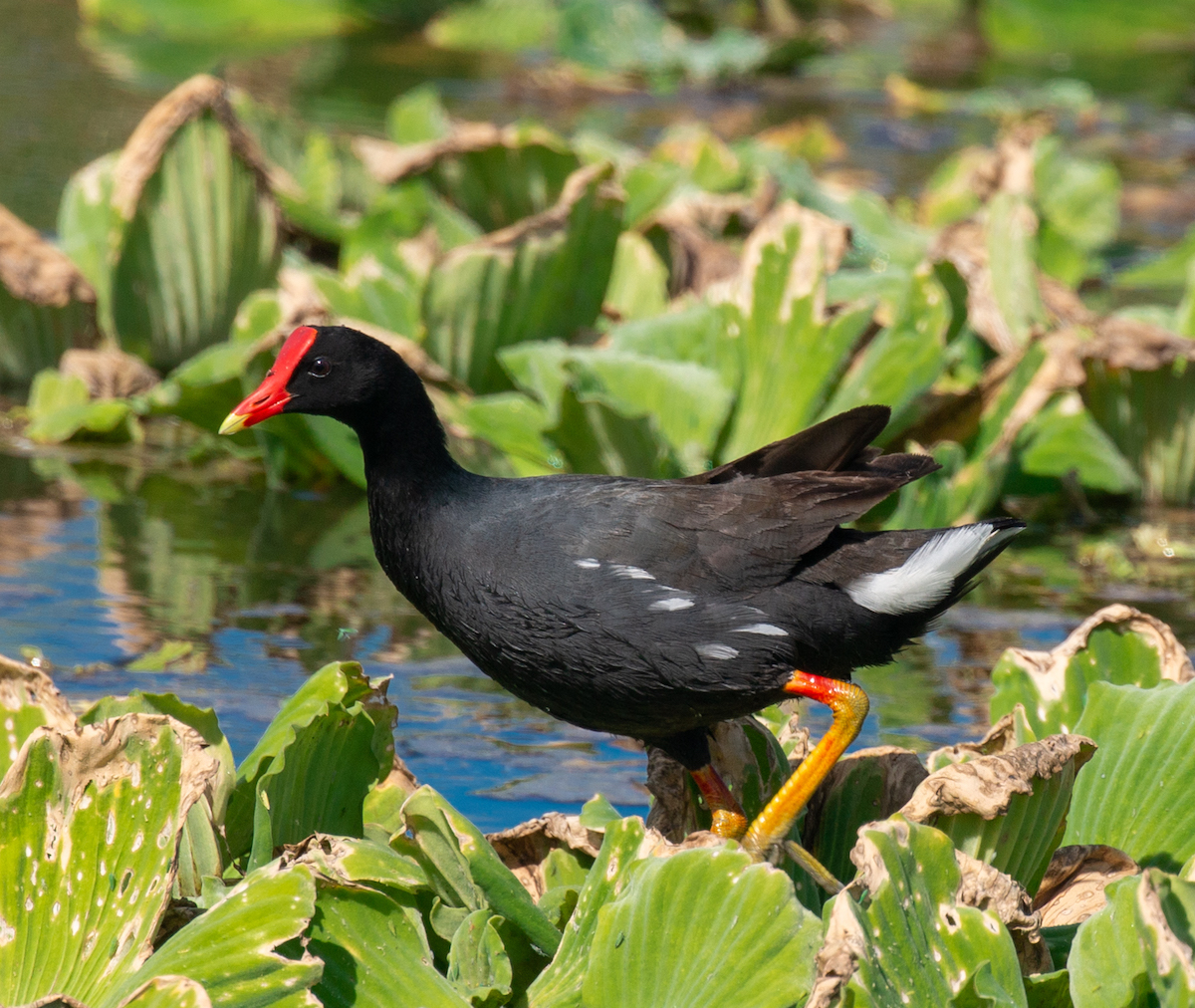Invasives targeted in wetlands project
Kawainui Marsh State Wildlife Sanctuary, Hawai‘i’s largest wetland, was recently awarded a North American Wetland Conservation Grant totaling $100,000. Managers of this special site, near Kailua in O‘ahu, have been battling a creeping invasion by several non-native plants such as water lettuce, water hyacinth, bulrush and mangrove. These green pests have taken over vast swathes of the site, and threaten the remaining open water and banks, which provide habitat for some of the rarest waterbirds in the world.
The NAWCA grant, and match funds from Hawaiʻi Department of Land and Natural Resources (DLNR), Division of Foresty and Wildlife (DOFAW), will be used to pay for the mechanical removal of non-native species using amphibious machinery. The local nonprofit Hui o Ko’olaupoko will bring together community volunteers to assist with hand-pulling of invasive weeds and replanting with natives on almost 20 acres of marsh. The result will be a spectacular mosaic of mudflats, open water, and native vegetation.

Poulation: About 1,000
Lainie Berry
The project will provide breeding habitat for endangered ‘alae ‘ula (Hawaiian Gallinule), ‘alae ke‘oke‘o (Hawaiian Coot) and ae‘o (Hawaiian Stilt) as well as feeding areas for up to 30 species of migratory waterfowl and shorebirds that fly long distances to our islands every year.
The project is also good news for nearby residents; after enhancement, the marsh is expected to be more resilient to climate change and to provide improved ecosystem services such as flood water retention. There will be excellent nature watching opportunities for local people as well.
Lindsey Nietmann, wildlife biologist with the Hawaiʻi DLNR, is spearheading the project. She said the work will begin in 2020 and is expected to take two years.
Please email Lindsey if you would like to volunteer.
Kawainui is important both locally and at a state level. It supports birds and plants that are found only in Hawai’i. This grant will help us in our ongoing efforts to curtail the spread of invasive species and restore the ecological function of the marsh.
– Lindsey Nietmann
